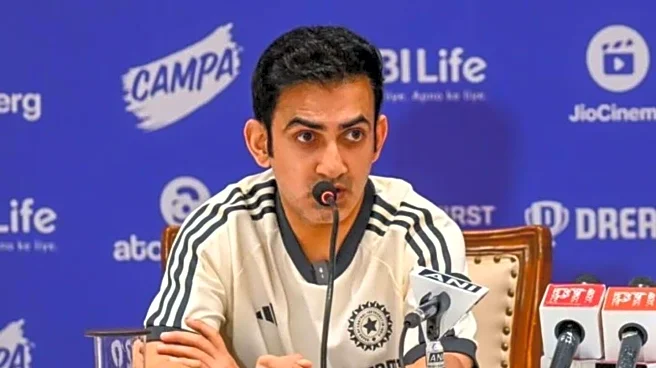India’s batting coach Sitanshu Kotak offered a curious defense of head coach Gautam Gambhir over the criticism he’s facing for his post-match comments after the first Test against South Africa in Kolkata,
which the hosts lost by 30 runs. Not only did Kotak contradict Gambhir’s statement about the controversial rank-turner at the Eden Gardens, he also said that the head coach ‘took all the blame on himself’ to protect the curators.
Gambhir had said that his batters needed to show better application and defensive technique to chase a very gettable target of 124. He added that it was ‘exactly the pitch we were looking for’ and the curator, Sujan Mukherjee, ‘was very, very helpful’, while also asking his team to have the capability of winning despite the conditions.
“See, in the last match wicket, Gautam said that he took all the blame on himself. He said that he took the blame because he felt that he should not put the blame on the curators,” Kotak said on Thursday. “Now, what happened in the last match, after a day, it felt like it was crumbling. There was a little bit of soil [that came up after the ball pitched]. All of you can see that. That was not expected. Even if the spin was expected, it was after 3 days or on the third day in the evening. Sometimes, the weather, sometimes, even the curators did not want it. I am telling you the truth. No one wanted it to be like this.”
“Now, from the second day itself, the wicket became too dry. Or the top layer of the wicket became too dry. And the layer underneath was very hard because there was a lot of rolling. Probably because of that, this happened – that’s how I understand it. Otherwise, genuinely, you can ask the curator, no one has said that the match should be over in two days or there should be square turn,” he added
“I can tell you from the time I have come here, every time it is the same thing that we play a Test match for 4-4.5 days,” Kotak added.
Kotak said the Guwahati surface is likely to behave more consistently this time when the second Test begins on November 22.
He added that the extent of seam movement and live grass would only become clear by the end of the next day before the pitch is covered, and that the weather from morning to evening would also play a role, factors he admitted he couldn’t yet predict. Still, he expected a fair contest, saying it should produce “4-5 days of good cricket.”








